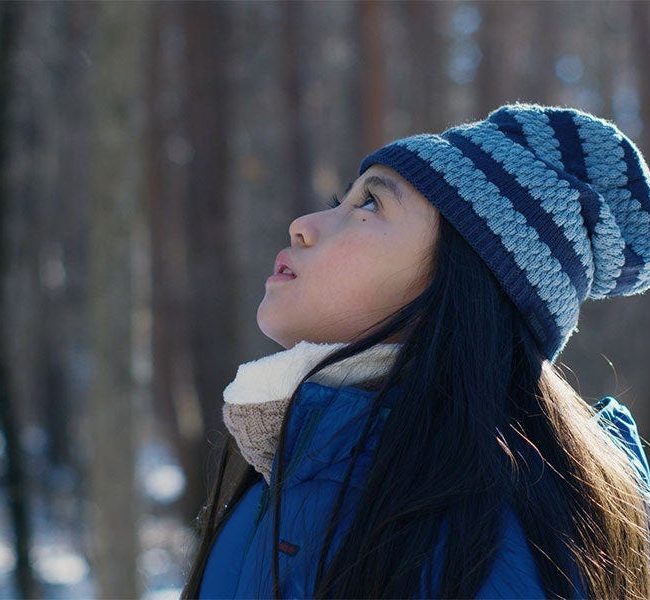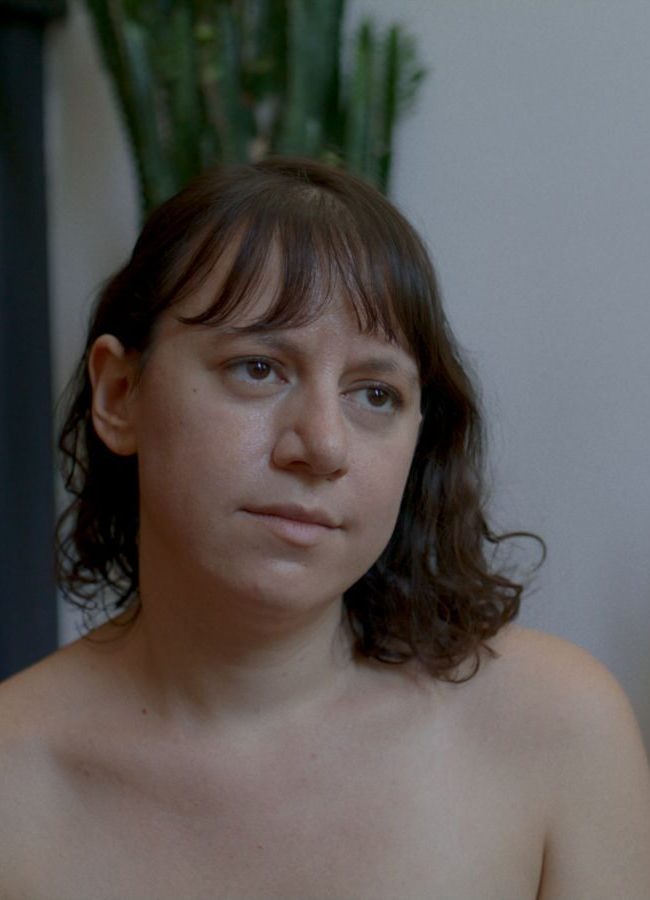Ghost Town, the new Chinese documentary directed by Zhao Dayong, was one of the surprise discoveries of this year’s New York Film Festival: a portrait of daily life in Zhiziluo, a mountain village near the Burmese border, whose residents have been left behind by the country’s economic boom. Zhao is one of a new generation of independent filmmakers who are bypassing the usual way of making movies in China. He never submitted his film for state approval. Instead, he raised the money and shot the film himself, off and on over a period of three years. But for filmmakers like Zhao, the price of avoiding state censorship is that their films are automatically ineligible for commercial exhibition. Instead, they’re limited to a small, semi-underground network of film festivals and other domestic venues, as well as international festivals and showcases like NYFF.
Nearly three hours long, Ghost Town is divided into three parts. The first, “Voices,” introduces us to two of the village’s Christian pastors, the 80-something John the Elder, and his son, Pastor John. John the Elder recounts the tale of his conversion by Western missionaries, and his 20-year prison sentence when the Communist Party took power and cracked down on Christianity. His son later confides to Zhao that his father has become a hard, difficult old man, a stranger to him in many ways. The second part, “Recollections,” presents a series of personal narratives in which various townspeople confront the local lack of economic opportunities: a pair of young lovers who face a dilemma when the woman’s family is offered a substantial dowry for her hand in marriage; an older couple working out the terms of their divorce; a young woman who moved to the city looking for work, only to find herself tricked into marriage. In “Innocence,” we follow a 12-year-old boy who lives on his own, hunting and foraging for food, finding something like a community among other lost children like himself.
Zhao films in long takes, usually from wide or medium-wide distance, a patient, reserved style of observation that immerses us in the flow of the villagers’ day-to-day existence. There’s no narrator, no clear timeline, no easily legible chain of cause and effect—it’s as if we, like Zhao, are ghostly visitors drifting through the town, bearing witness to the events, encounters, and images that pass before us: a prayer service in a dilapidated church; a group of men attempting to neuter a bull; the little boy’s hunting and cooking routines; the heartsick, exhausted middle-aged divorcé negotiating his settlement with his ex-wife. Perhaps the most affecting moments come when the villagers are alone with Zhao’s camera and speak openly of their dashed dreams and their hopes for something better. Ghost Town’s meditative pace drew me in, and the stories Zhao found kept me riveted from beginning to end.
I sat down with Zhao two days after the film’s NYFF screening, with Vincent (Tzu-Wen) Chang serving as our translator.
HAMMER TO NAIL: Are you pleased with the reception that your film has had so far [here]?
ZHAO DAYONG: I think it’s wonderful. I didn’t expect that the American audience would actually enjoy the film this much.
H2N: You come out of a group of filmmakers who are working independently, and you don’t have many opportunities to show your work in China. Does it bother you that you aren’t able to reach the audience your films are made for?
ZD: I’m used to it. This is part of our lives.
H2N: Do you have any optimism that things may improve?
ZD: I really don’t have the time to think about it, because it’s outside of my control. The only thing I can do is persist in making my films. That is something I have control over. For Chinese independent filmmakers, it’s important for us to be persistent, to insist on making good quality films, and that will hopefully change the environment in the future.
H2N: You were a painter, and you worked in advertising. How did that lead to becoming a documentary filmmaker?
ZD: When I was a professional painter, the overall goal was the same, to find the best method to create art. As you mentioned, I was working for an advertising agency making commercials, but I don’t see that as creating art—that is just a way to pay the bills. Going back to this idea of finding different ways to make things—during that process, I did installations, performance art, voice, painting of course; I used different media to express my creative energy. I think it was a process of exploration, of finding what would be the best medium for me. Right now, film is something with which I can capture the essence of the subject matter I want to depict. The time is right for me to use film.
H2N: When did you first start visiting the village, and what made you want to make a film about this area?
ZD: I went there in 2001 for the first time, when I was working on a narrative feature film, to look for locations. And while I was there, I was very impressed by the place and really enjoyed the people and the community. The narrative film didn’t pan out the way I wanted it to, so I decided to go back there in 2005 to start making this documentary.
H2N: How did you arrive at the structure of the film—I assume it was something you found in the editing room?
ZD: During the process of making it, I’d already decided on what kind of structure the end product would have, [one that would] reflect my experience living in the community. I had a very clear, subjective concept that I wanted to express in this film, and that’s why I used these three different episodes—even the titles of the three episodes, I had in mind while shooting. Of course, during post-production I had to go through all the raw material, but it went very quickly because I already knew what I wanted for each particular episode. It’s actually more of a portrait of myself than the people I filmed. And that’s why I never really considered this a quote-unquote documentary, because in regards to this particular village, its history, its people, and the events happening there—I think those are unimportant. What’s more important is how I depict the stories, the images I compose. So that’s why I think it’s more a movie about me than about them.
[NOTE: I wish I’d followed up on Zhao’s answer above, as I’d like to have heard more about his “clear, subjective concept” for the film. And I doubt he meant to imply that the people he filmed were “unimportant”—only that his perspective, as the filmmaker, would ultimately take precedence over theirs.]
H2N: I was thinking about the title and how it relates to the three different parts. You speak in the press kit of wanting to explore “lost histories,” especially the histories that were lost after the Cultural Revolution, and that seemed clear in the first part, when John the Elder mentions that when he was converted, he no longer believed in ghosts, he believed in God. In the second section, it seemed that the ghosts there had to do with the fact that the town was in some ways more dead than alive, that the young people felt they had to leave the town in order to lead a more full life. And then in the third section, the young boy takes part in the ghost exorcism ceremony. Is that a fair reading of the title?
ZD: Depending on the audience, they can come up with different interpretations. Yours is a correct one from your perspective. And at the same time I value other people’s interpretations as well. Because I really don’t have any control over how you see it, how you read it, how you interpret it—actually, it really doesn’t matter to me, because I have gotten what I want out of the process of making it, and whether your interpretation is the same as mine is completely irrelevant. For me, I have what I want, and however you want to interpret it is just as valid as any others I have listened to or read.
H2N: I’d like to ask a few questions about the specific parts of the film. In part one, “Voices,” I was wondering, how prevalent is Christianity in this town? It seemed that there weren’t that many people in the church, but then there weren’t many people in the town in general.
ZD: It’s about 55 percent of the people living in that particular neighborhood, but the numbers are definitely dwindling, and that probably has something to do with the impact of modern life and the effect it has on the community. But I think that when people go outside the community, and go to the big city to work, a lot of them realize they feel totally lost, and then return to the village, due to these feelings of loneliness and isolation.
H2N: Then in part two, rather than focus on one or two people, you create a group portrait. Instead of one individual story, it’s several different stories all grouped around the theme of staying or leaving.
ZD: Yes, that was done intentionally, I wanted to have that contrast between the first and the second parts, from the one family in the first part to numerous families in the second.
H2N: I was curious what happened to the young couple after the shooting.
ZD: They got married. They returned to the town and opened up a grocery shop and they’re enjoying their life together.
H2N: And in part three, it’s never explained what happened to the young boy’s parents. Did they die, did they move away…
ZD: The parents divorced, and the kid didn’t want to live with either parent. He was very naughty, very mischievous, and he decided he didn’t want to have anything to do with either of them. The parents divorced when the kid was five years old, and both remarried, and that’s another reason he didn’t want to live with either of them. So he lived with his grandmother for a few years, and then he decided that he didn’t want to go to school, and wanted to live on his own, without his family members.
H2N: When part three began, I felt the child was living an almost unimaginably difficult life—he was all by himself, he was fighting all the time, he was hunting for food, but as the story went on, I began to get the sense that he was a part of the community. He mentions his grandmother is nearby, he has friends, he has people he cares for and people who help care for him. And it made the story less painful than I thought it was at first, if not exactly optimistic—even if he didn’t have his family, he still belonged to a community here, to some extent.
ZD: In Chinese society [there’s the importance] of connection, of networks, guanxi, as we say—you can always find something to eat and a place to stay, unlike here in the United States, where if you don’t have a job, you may have to be homeless and be all by yourself.
H2N: You’re working on a documentary about the underground Nigerian Christian community in China—when do you think that might be finished?
ZD: That one actually has been completed.
H2N: Well, I hope we’ll get to see it here soon.
ZD: Yes, of course.
H2N: Thank you very much for the interview, it’s a beautiful and thoughtful film.
ZD: Thank you.
—Nelson Kim
(For more information on Ghost Town, visit the film’s pages at Lantern Films, Zhao and David Bandurski’s production company, and dGenerate Films, which is representing it in the U.S.)












Pingback: GHOST TOWN – at MoMA and Beyond – Hammer to Nail
Pingback: VOD REPORT – Hammer to Nail